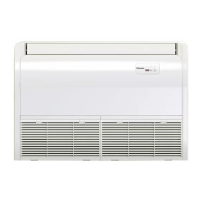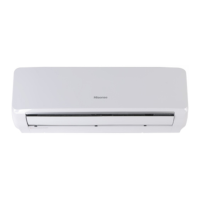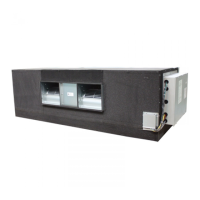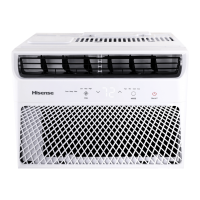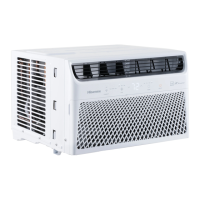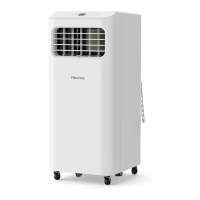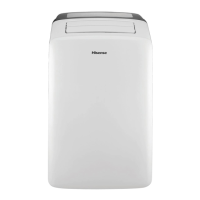48
Capacities and Selection Data
Correction factor according to total indoor unit capacity:
- Select the correction factor according to manual of Engineering Data.
- Correction factor according to piping length:
- Select the correction factor according to 4.2 “Capacity Correction Based on Refrigerant Piping Length”.
- Correction factor according to defrosting condition (for heating operation):
- Select the correction factor according to 4.3 “Correction Factor According to Defrosting Operation”.
(3) Checking unit capacity.
Compare the outdoor unit capacity calculated in the item (2) with the total heating load.
(4) Calculating each indoor unit capacity.
Recalculate the indoor unit capacity as follows. (The calculation is required for cooling and heating operation.)
Unit capacity for each room = Outdoor Unit Capacity (value at item 2) x (indoor unit capacity in concerned room (model)
/ Total indoor unit capacity (model)
If the outdoor unit capacity is insucient against the necessary heating load for each room, recalculate it from the item (2)
after the outdoor unit capacity is increased.
(5) Checking Refrigerant Concentration at Refrigerant Leakage < Permissible Refrigerant Concentration
(6) Taking Safety Measure (Reconsideration of system is not required.)
(7) Correction of outdoor unit model if the condition of both (5) and (6) are negative.
NOTE
● Refer to 6.3 Charge Operation in Installation Chapter for items from (5) through (7).
● When the temperature is set, consider that the ambient temperature increases by short circuit. Especially, if multiple
outdoor units are installed or there is obstacle around the outdoor unit, pay attention to increase the ambient
temperature.
● For the setting temperature at the heating operation in the ducted and cassette indoor unit type, consider the temperature
irregularity between the oor and the ceiling surface. The temperature around the ceiling surface normally becomes 2ºC
higher than the oor surface during the heating operation.
● For selecting indoor unit capacity, if the sensible heating load is considered, consider the sensible heat factor together.
● In the case that the total indoor unit capacity exceeds the outdoor unit capacity, the temperature is low or the piping
length is long, if the indoor units operate simultaneously, the air outlet temperature decreases so that may be felt
uncomfortably. Therefore, the facility should be designed that the cooling/heating capacity for indoor unit calculated from
the cooling/heating capacity for system is more than the heating load.
4.1.4 Selection procedure example
Given conditions
Once considered the system possibilities, it’s the moment to start with the selection procedure. In order to do this, it has been
assumed an installation consisting of several rooms with dierent required cooling loads and temperature conditions.
Total load required for each room
Concept Room 1 Room 2 Room 3 Room 4 Room 5 Room 6 Room 7
Estimated cooling load (Btu/h) 13,470 17,250 17,250 20,700 27,930 30,760 30,760
Estimated heating load (Btu/h) 14,590 18,620 18,620 22,410 29,440 32,050 32,050
Temperature condition
unit: °F(°C)
Operating conditions Cooling Heating
Indoor air inlet temperature
DB 80(27.0) 68(20.0)
WB 66(19.0) —
Outdoor air inlet temperature
DB 86(30.0) 34(1.0)
WB — 32(0.0)
DB: dry bulb; WB: wet bulb.
In this example, the maximum required loads will not be simultaneous.

